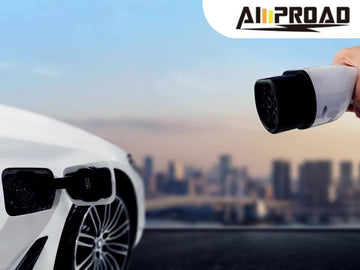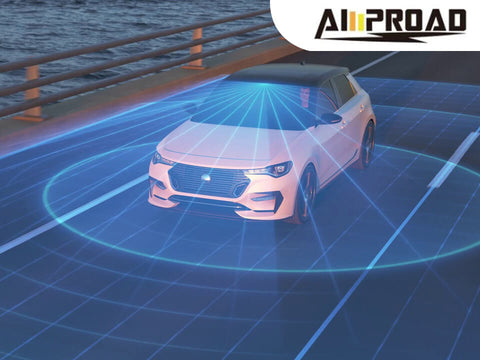
Ever wondered how your electric car gets charged? It's not as simple as plugging it into a regular outlet. Enter the EVSE, or Electric Vehicle Supply Equipment. Often called charging stations, EVSEs play a critical role in ensuring safe and efficient power flow between the electricity grid and your electric car. Think of it as a conductor and guardian rolled into one, making sure the right amount of electricity gets to your car's battery safely and efficiently.
Key Functions of an EVSE
Facilitate Safe and Controlled Power Transfer
EVSE meaning what? Electric Vehicle Supply Equipment (EVSE), commonly known as EV chargers, are pivotal components in the infrastructure supporting electric vehicles. These devices serve multiple functions aimed at ensuring the safe and efficient transfer of power from the grid to the vehicle.
Mediating Electricity Flow
EVSE acts as a mediator between the power grid and the electric vehicle, managing the flow of electricity to prevent overloading or damage. This intermediary role is crucial for maintaining the stability of the grid and safeguarding the vehicle's electrical system.
In addition to regulating the flow of electricity, EV charger also plays a vital role in optimizing charging efficiency. By adjusting voltage and current levels, they ensure that the vehicle's battery is charged safely and effectively, prolonging its lifespan and maximizing driving range.
Communication and Control
Another key function of EVSE is establishing communication with the vehicle's charging system and negotiating charging parameters.
Establishing Communication
EV chargers initiate communication with the vehicle's onboard charging system to exchange important information such as battery status, charging capabilities, and user preferences. This communication enables the charger to tailor the charging process to the specific needs of the vehicle and the user.
Negotiating Charging Parameters
Based on the information exchanged, EV chargers negotiate charging speed and power requirements with the vehicle. Factors such as battery health, available power, and desired charging time are taken into account to optimize the charging process and ensure a seamless user experience.
Safety Features
Safety is paramount in EV charging, and EVSE are equipped with various features to protect users, vehicles, and infrastructure.
Ground Fault Detection and Interruption
EV chargers are equipped with ground fault detection systems that monitor the electrical circuit for any abnormalities. If a fault is detected, the charger automatically interrupts the power supply to prevent electric shocks and mitigate potential damage.
Overcurrent Protection
To prevent overloading and damage to the vehicle's electrical components, EV chargers incorporate overcurrent protection mechanisms. These systems monitor the flow of current and intervene if it exceeds safe limits, ensuring the charging process remains within specified parameters.
Deactivation on Disconnection
EVSE are designed to deactivate the charging process if a disconnection between the charger and the vehicle occurs. This safety feature prevents potential hazards and ensures that charging is halted safely until the connection is restored.
All in all, EV chargers play a critical role in enabling the widespread adoption of electric vehicles by providing safe, efficient, and user-friendly charging solutions. From mediating electricity flow to implementing advanced safety features, EVSE are essential components of the electric mobility ecosystem.
One type of EVSE that is gaining popularity is the Level 2 EV charger. These chargers provide a higher power output compared to standard Level 1 chargers, allowing for faster charging of electric vehicles. Level 2 EV chargers can be installed in homes, workplaces, or public charging stations, providing a convenient and efficient way for EV owners to recharge their vehicles.
EVSE vs. Charger
When discussing electric vehicle (EV) charging, it's essential to understand the distinction between Electric Vehicle Supply Equipment (EVSE) and the car's internal charger, which converts AC to DC for the battery.
Electric Vehicle Supply Equipment (EVSE)
EVSE, often referred to as charging stations or chargers colloquially, serves as the interface between the power grid and the electric vehicle. It manages the flow of electricity, facilitates communication between the vehicle and the grid, and incorporates safety features to ensure secure charging.
EVSE does not perform the actual conversion of AC to DC power required to charge the vehicle's battery. Instead, it supplies AC power to the vehicle, which is then converted to DC internally by the onboard charger.
Internal Charger
Every electric vehicle is equipped with an internal charger, also known as an onboard charger. This component is responsible for converting AC power from the EVSE or charging point into DC power suitable for charging the vehicle's battery.
The internal charger is typically located within the vehicle and is integrated into the electric vehicle's powertrain system. It adjusts the incoming AC voltage and current to match the requirements of the vehicle's battery, ensuring efficient and safe charging.
Key Differences
The primary difference between EVSE and the car's internal charger lies in their functions and locations:
- Function: EVSE serves as the intermediary between the power grid and the vehicle, managing the flow of electricity and incorporating safety features. The internal charger, on the other hand, converts AC power from the EVSE into DC power suitable for charging the battery.
- Location: EVSE is located externally and is typically installed at parking spaces, residential homes, or public charging stations, such as Tesla destination charger. In contrast, the internal charger is integrated into the vehicle's architecture and is not visible to the user.
While EVSE and the internal charger work in tandem to facilitate electric vehicle charging, they serve distinct functions. Understanding this difference is essential for efficient and safe EV charging.
As an example of an EVSE, the AMPROAD Level 2 EVSE home charger offers convenient and efficient charging for electric vehicles. With its user-friendly design and robust safety features, it provides a reliable solution for residential EV charging needs.
The Importance of EVSE in Safe and Efficient EV Charging
Electric Vehicle Supply Equipment (EVSE) plays a critical role in ensuring safe and efficient charging for electric vehicles (EVs). Here's a concise overview of why EVSE is vital in the EV charging process:
- Safety Assurance: EVSE incorporates various safety features such as ground fault detection, overcurrent protection, and automatic deactivation on disconnection. These features mitigate risks of electric shocks, overloading, and damage to the vehicle or infrastructure, ensuring user safety during the charging process.
- Controlled Power Transfer: EVSE acts as a mediator between the power grid and the EV, regulating the flow of electricity to prevent overloading and damage. By managing voltage and current levels, EVSE ensures that the charging process is optimized for the vehicle's battery, promoting longevity and reliability.
- Communication and Control: EVSE facilitates communication with the EV's charging system, exchanging critical information such as battery status and charging preferences. This enables EVSE to negotiate charging parameters, such as speed and power requirements, to meet the vehicle's needs while considering factors like battery health and available power.
- Integration of Advanced Features: Modern EVSEs are equipped with advanced features such as smart connectivity, scheduling options, and energy management capabilities. These features enhance user convenience, enable cost-effective charging strategies, and promote integration with renewable energy sources, contributing to overall sustainability.
- Infrastructure Development: The deployment of EVSE infrastructure is essential for the widespread adoption of electric vehicles. By expanding access to charging stations in residential, commercial, and public spaces, EVSE facilitates EV ownership and encourages drivers to transition to electric mobility, thereby reducing reliance on fossil fuels and mitigating environmental impacts.
- Future-Proofing: As EV technology continues to evolve, EVSE plays a crucial role in future-proofing charging infrastructure. Scalable and adaptable EVSE solutions can accommodate advancements in EV battery technology, higher charging speeds, and increased demand, ensuring compatibility and reliability for years to come.
EVSE is indispensable for safe, efficient, and convenient EV charging. With its role in ensuring safety, managing power transfer, enabling communication and control, integrating advanced features, supporting infrastructure development, and future-proofing charging infrastructure, EVSE contributes significantly to the ongoing transition towards sustainable electric mobility.
FAQs / People Also Ask
Q1: What is an EVSE, and what does it do?
A1: EVSE stands for Electric Vehicle Supply Equipment. It serves as the interface between the power grid and an electric vehicle (EV), managing the flow of electricity during the charging process.
Q2: How does an EVSE facilitate charging?
A2: EVSE regulates the flow of electricity from the power grid to the EV's battery, ensuring safe and controlled charging. It also communicates with the EV to negotiate charging parameters and incorporates safety features to protect both the vehicle and the user.
Q3: What safety features does an EVSE have?
A3: EVSE includes safety features such as ground fault detection, overcurrent protection, and automatic deactivation on disconnection. These features mitigate risks of electric shocks, overloading, and damage to the vehicle or infrastructure.
Q4: Can an EVSE charge different types of electric vehicles?
A4: Yes, EVSE is compatible with various types and models of electric vehicles. It typically utilizes standardized connectors and communication protocols to ensure interoperability across different EV brands.
Q5: Is an EVSE the same as a charging station or charger?
A5: While EVSE is often referred to colloquially as a charging station or charger, it is technically the infrastructure that facilitates charging, rather than the device that performs the actual charging. The charger is the component within the EV that converts AC power from the EVSE into DC power for the battery.
Q6: Can I install an EVSE at home?
A6: Yes, many EV owners install EVSE units at their homes for convenient charging. Home EVSE units are typically Level 2 chargers, providing faster charging speeds than standard wall outlets.
Q7: How does an EVSE contribute to sustainable transportation?
A7: EVSE plays a crucial role in supporting the adoption of electric vehicles, which contribute to reducing greenhouse gas emissions and dependence on fossil fuels. By providing infrastructure for EV charging, EVSE encourages the transition to sustainable transportation solutions.
Q8: Can an EVSE be used with renewable energy sources?
A8: Yes, EVSE can be integrated with renewable energy sources such as solar or wind power. This allows EV owners to charge their vehicles using clean energy, further reducing environmental impact and promoting sustainability.
Q9: Are there different types of EVSE available?
A9: Yes, EVSE comes in various types and configurations, including Level 1 and EVSE Level 2 chargers for residential and commercial applications. Additionally, there are fast chargers, also known as DC fast chargers or Level 3 chargers, which provide rapid charging for EVs on the go.
Q10: How can I find EVSE locations for public charging?
A10: EV owners can use mobile apps, websites, or navigation systems specifically designed to locate EVSE stations. These platforms provide real-time information on the availability and location of charging stations, making it convenient for drivers to plan their routes and charging




